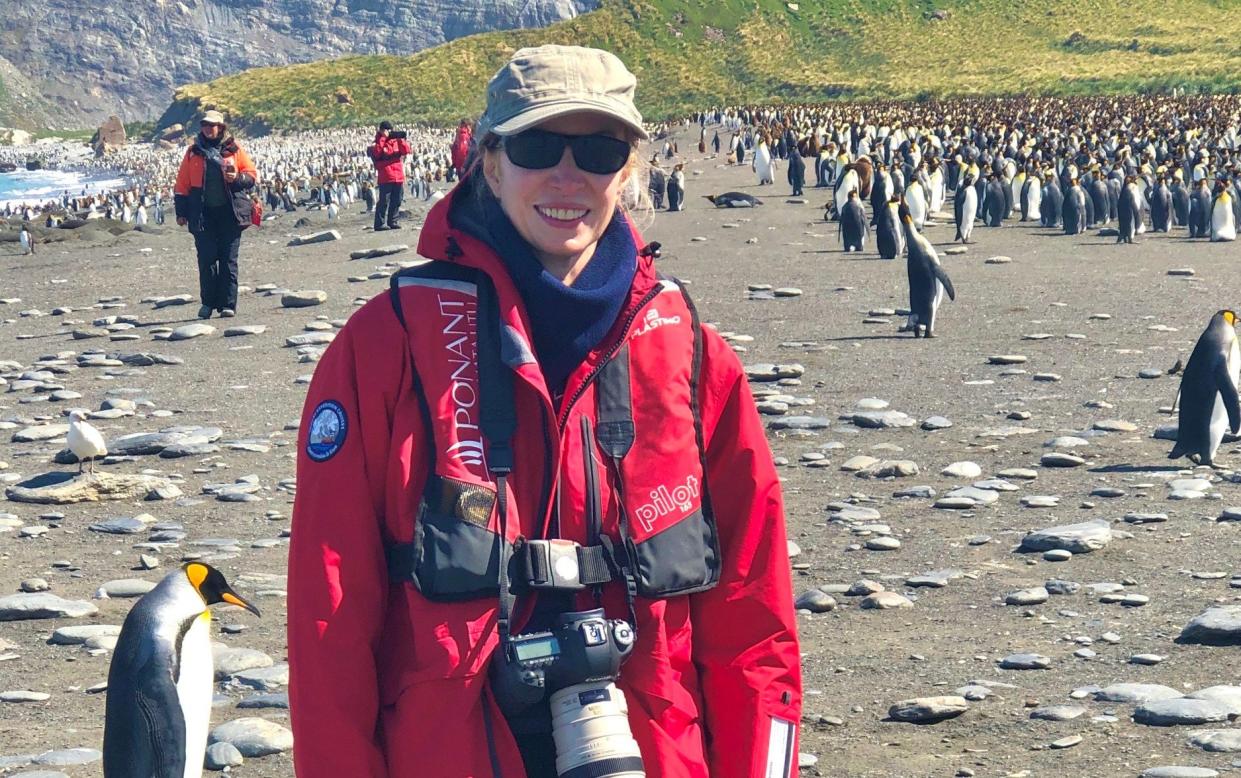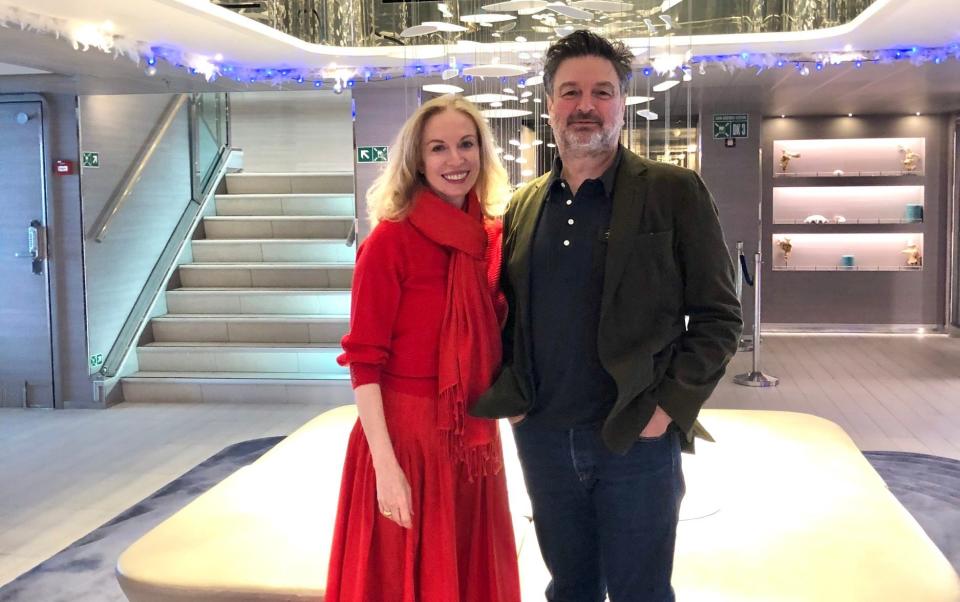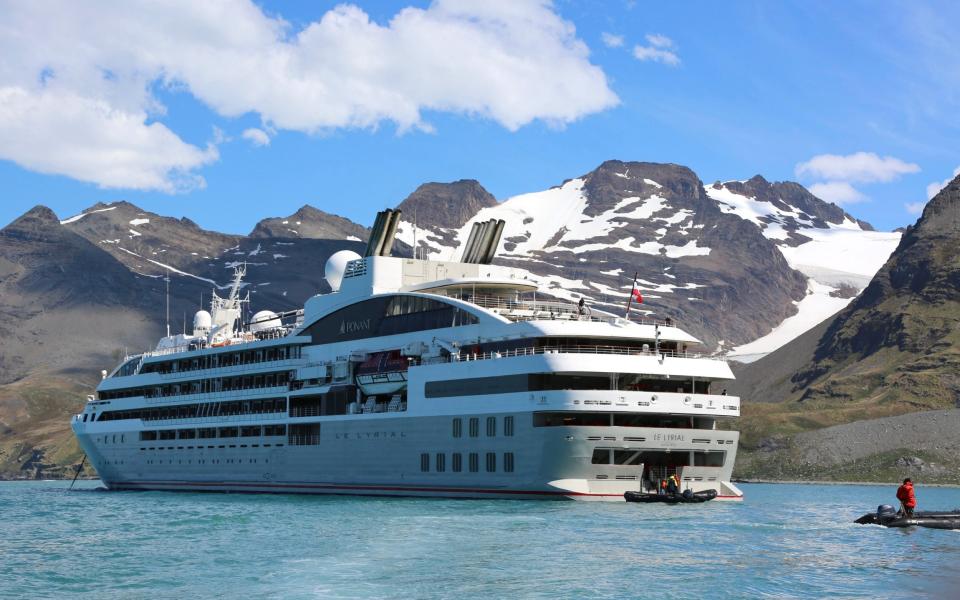I'm a cruise snob – I only go on expedition ships and here's why

Trapped on a hulking great ship with hordes of half-cut passengers. Cramming into tiny ports to buy tourist tat. Returning to the lounge where a singer in a spangly top is strangling Wind Beneath My Wings. Then death by a thousand buffets. This is what people seem to imagine when I tell them cruising is my favourite kind of holiday by several nautical miles. Clearly, they haven’t experienced “expedition cruising”, which is a very different kettle of line-caught fish.
Expedition cruising hits a particular sweet spot where rugged adventure meets boutique luxe – the “luxpedition”, if you will. I’ve never been happier than when clambering from ship to Zodiac (an inflatable speedboat), zipping over waves, wind whipping my cheeks, eyes wide watching for wildlife, before re-embarking a bit wet, a bit whacked, but within seconds – and here’s the equally important part – in possession of a glass of champagne. You see, although I don’t seek flash villas and infinity pools (I’m into dramatic vistas that shiver with a sense of danger), if it’s a high-end holiday, I like some spoiling. Expedition cruises fit that bill to perfection, the ultimate example being a voyage to Antarctica.

The White Continent boasts an impressive list of “ests”, for it is the highest, coldest, driest, windiest, loneliest region on Earth; and if your jumping-off point is the tip of South America, the journey involves some hard yards, namely the two-day crossing of the Drake Passage – the heaving, often hostile, expanse of tin-grey ocean between Cape Horn and the South Shetland Islands, with the Antarctic Peninsula beyond. Yet when you’re through it, when the waves quieten and icebergs silently slide into view, it’s like being in a sci-fi movie when characters slip through a portal of CGI’d shimmering air, emerging into a dazzling new dimension.
Expedition ships are small, in that they look nothing like a slow-moving brutalist block of flats. Just before Covid, I journeyed with my husband to Antarctica with Abercrombie & Kent, who chartered Ponant’s super-sleek ship Le Lyrial. With capacity for just 244 guests, A&K limited it even further to 199, resulting in a personnel-to-guest ratio of around one to one.

Although grand suites were available, our cabin had everything we desired, including en-suite shower and balcony. In truth, we weren’t in it much: too busy in Zodiacs riding parallel to humpback whales and on shore hiking snow-dusted calderas. Back on board, we’d be in the bar sipping a perfectly mixed negroni at lunch time. Maybe a touch before. OK, 12 o’clock. And if the expedition crew spotted something remarkable, they’d announce it over the speakers – cue passengers fleeing the spa in dressing gowns to go and watch orcas, and diners abandoning their chateaubriand to witness breaching whales.
In the all-inclusive deal, we had the choice of two restaurants – one very smart, the other casual and buffet-style, which I preferred, even though lavish buffets often diminish one’s ability to select a sensible meal – all too easy to ladle both lasagne and Thai green curry onto your plate and inexplicably garnish it with grated carrot. But the quality of the cuisine was splendid.
Peerlessly professional is how I’d describe the expedition team that included wildlife experts, geologists and historians, who not only oversaw all landings and activities, but were also high-calibre speakers. They hosted pre-dinner roundups of what you’d seen that day (with drinks, obvs), announced plans for the next day, and provided a full schedule of fascinating lectures.

Quite rightly, they were also sticklers for the region’s strict rules, which included keeping kit scrupulously clean so we didn’t transfer alien debris or seeds between sites. This involved hoovering pockets and rucksacks and walking through disinfectant when leaving or entering the ship, all part of safeguards overseen by the International Association of Antarctica Tour Operators (IAATO). In South Georgia, the rules were even tougher – we had to take tweezers to our boot treads to pick out every grain of sand.
As for fellow guests, they were like-minded given they’d invested in the same adventure. By no means a geriatric outing – families were aboard – but those who were older and still game were in good company. And while there was plenty of bonhomie, at no point were we forced into friendships at the captain’s table or pressed into a mass Macarena. That said, there was a smattering of light entertainment. Someone played the grand piano and our cruise director put on a cracking New Year’s Eve disco. Quite what the latter-day explorers in their canvas trousers and reindeer gloves would make of us retracing their dogged footsteps in such decadent comfort, I hate to think.
With this front of mind, on South Georgia we paid our deepest respects to Ernest Shackleton at his final resting place in Grytviken. Just as sobering was standing by the icy waterfall that marked the final push in one of the most punishing and astounding rescue missions ever undertaken – travelling to South Georgia with a small team to get help for the crew of the Endurance stuck on Elephant Island. Stumbling to Stromness whaling station, it was here that Shackleton and co were warmed back to life from their freezing, brutal ordeal. And we’re not talking about being met with a tray of hot flannels.

On South Georgia, a colony of king penguins stretched as far as the eye could see, all caring for powder-puff chicks in the largest crèche in the world. What’s more, the beach was fringed by line upon line of sleepy, sand-flicking seals. All that was missing was David Attenborough, whispering from a rock. We had to pinch ourselves to be sure it was us experiencing this immense privilege.
Expedition ships are often the best way to reach and revere remote areas – such as Silversea’s voyage to the Kimberley in north-western Australia, an ancient wilderness with deeply slashed gorges and soaring cliffs drenched in deep reds and pinks, its underlying geology spanning two billion years. Days were hot but filled with magical exploration, including a trip in a light aircraft over the Bungle Bungles (beehive-shaped sandstone towers) and up-close encounters with incredible rock art, some dating back 17,300 years. Make no mistake, you need to heed health and safety on these trips.

Learn the drills and follow all rules, such as the guidelines created to safeguard you around the fierce saltwater crocodiles that patrol both the fresh and salty waters of the Kimberley. While in Antarctica, you can certainly hit stormy seas. Bottom line, if your heart lies in the ease of slipping on slingbacks in Santorini rather than hoovering the seams of your parka, expedition cruising might not be for you.
I suffer from anxiety – and have done all my life – yet Antarctica felt so otherworldly, my worries went to white-out. During the Drake crossing, while my husband lay in bed anticipating reacquaintance with his breakfast, I was on deck watching the ship’s bow rise and drop, rise and drop, haphazard gusts of snowflakes pelting me in that unnaturally dizzy-busy way glitter swirls in snow globes. I managed to pick up a Wi-Fi signal long enough to post a video on Instagram – 10 seconds of immense sheets of stony sea colliding with the side of the ship, fizzing with angry foam. A friend remarked, “That looks scary, Jan.” I smiled. Time for a negroni.
How to do it
Abercrombie & Kent (abercrombiekent.co.uk) exclusively charters all-inclusive voyages to Antarctica, starting with a 12-night Antarctic itinerary from £10,455. Includes pre-cruise stays, A&K-led city tours and airport transfers. International flights not included.
Covid rules: Consult your tour operator or cruise line for the most up-to-date advice.


